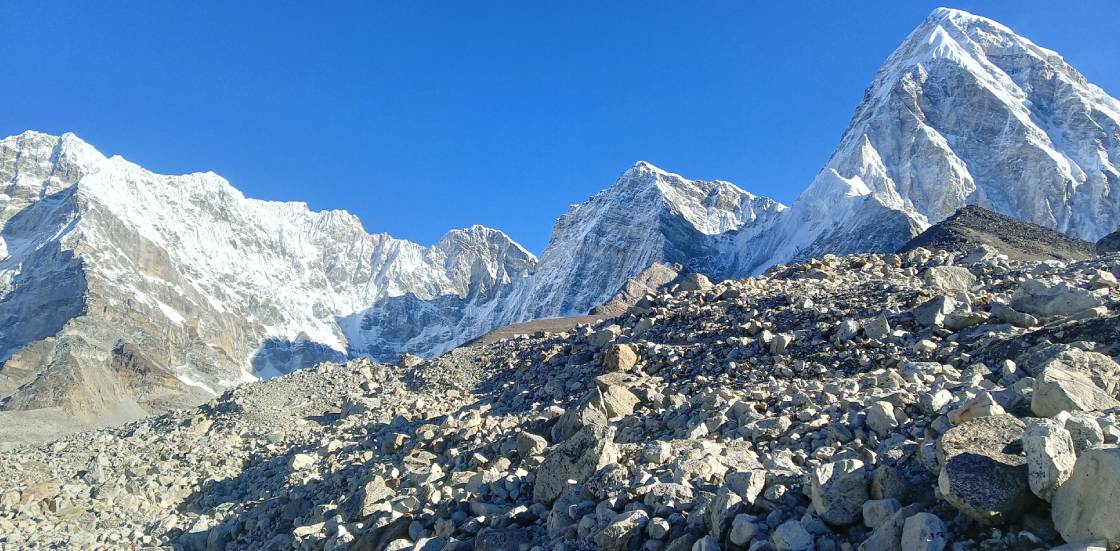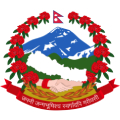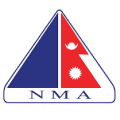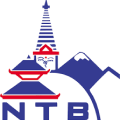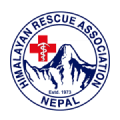Everest Base Camp with Gokyo Chola

Trek Duration
15 days
Best time to go
Mar, April, May, September, October, November
Group Size
2-20
Max Trekking Altitude
5545 M
Accommodation
Tea Houses
Trek Grade
strenuous
Area
Everest Region
Hours of Walking
5-10 hrs
Start point - End point
Kathamndu
Everest Base Camp with Gokyo Chola is a thrilling and challenging adventure that takes trekkers through some of the most spectacular landscapes in the Everest region. This trek combines the iconic journey to Everest Base Camp with an additional route to Gokyo Lake, one of the most beautiful high-altitude lakes in the Himalayas. The highlight of this trek is crossing the Chola Pass, a high mountain pass that connects the Everest and Gokyo valleys, offering incredible panoramic views of snow-capped peaks, glaciers, and turquoise lakes. This extended trek is ideal for seasoned trekkers seeking a more immersive and adventurous experience, as it not only takes you to the base of the world’s highest peak but also offers the opportunity to explore the serene Gokyo lakes and the rugged landscapes of the Khumbu region.
Everest Base Camp with Gokyo Chola is a 15-day journey that offers a unique and exhilarating experience, combining the beauty of the Everest region with the serene Gokyo Lakes and the adventurous challenge of crossing the Chola Pass. This trek is considered more challenging than the traditional Everest Base Camp trek due to the high-altitude crossings and the technical nature of the Chola Pass. The trek begins with a flight to Lukla and then follows the classic route to Namche Bazaar, Tengboche, and Everest Base Camp, before diverging to the Gokyo Valley. The ascent to the Gokyo Lakes is a highlight, offering stunning views of peaks like Cho Oyu and Makalu, as well as a chance to witness the beauty of the turquoise lakes. After reaching Gokyo, the trek continues across the challenging Chola Pass, which stands at 5,420 meters (17,782 feet), before descending to the Everest Base Camp. The trek’s route takes you through remote Sherpa villages, where you’ll experience the rich cultural heritage of the local communities, including the famous Tengboche Monastery and warm hospitality from the Sherpas.
Along the way, you’ll encounter stunning landscapes, including rhododendron forests, glaciers, and snow-capped peaks. The trek is physically demanding, requiring good fitness and acclimatization to prevent altitude sickness, but it rewards trekkers with some of the most breathtaking views in the world, making it a memorable and challenging adventure.The Gokyo Chola Pass Everest Base Camp Trek teaches valuable lessons in perseverance, resilience, and humility. As trekkers face the physical challenges of high-altitude climbs, crossing rugged passes, and enduring harsh weather, they learn the importance of patience and determination. The trek also fosters a deep respect for nature’s immense power and beauty, as well as the strength and simplicity of the Sherpa culture, which thrives in harmony with the mountains. Beyond reaching Everest Base Camp, the journey is a reminder that true achievement lies not just in conquering physical summits, but in embracing the process, overcoming obstacles, and finding a deeper connection to the world around us. The trek offers a chance for personal growth, reflection, and a sense of accomplishment that goes far beyond the final destination.
The Gokyo Chola Pass Everest Base Camp Trek is not just about reaching a destination. It is about immersing yourself in the beauty of nature, overcoming physical challenges, and connecting with the culture of the Sherpa people. With every step, you discover more about the mountains and yourself, making this trek a journey that stays with you long after you return.
Everest Base Camp with Gokyo Chola is a journey that unfolds like a living adventure, where each step brings a new vista, a new challenge, and a deeper connection to the Himalayas. From the moment your flight from Kathmandu touches down in the tiny Lukla airport, the trek begins, and so does the beauty of Nepal’s mountainous landscape. The path leads you through dense forests of pine and rhododendron, past colorful prayer flags fluttering in the wind, and across suspension bridges swaying over rushing rivers. The first days of the trek are a gentle introduction, as you make your way through the Sherpa villages of Phakding and Namche Bazaar. Here, the ruggedness of the terrain becomes evident, and the air grows thinner, preparing you for the challenges ahead.
As you ascend further, the landscape transforms. You pass through Tengboche, where the majestic sight of Everest, Lhotse, and Ama Dablam stand tall in the distance. The beauty of the surrounding snow-capped peaks is awe-inspiring, but the real highlight comes when you reach the Gokyo Lakes. The vibrant turquoise waters of the lakes, framed by towering mountains, leave trekkers speechless. The climb to the Gokyo Ri, which offers a panoramic view of Everest, Lhotse, Makalu, and Cho Oyu, is an unforgettable experience that rewards your effort with breathtaking vistas.
The real test of the trek begins with the crossing of the Chola Pass, a demanding and thrilling high-altitude pass at 5,420 meters (17,782 feet). The journey over the pass involves navigating rocky terrain, ice, and snow, and is often done with the assistance of guides and porters to ensure safety. As you make your way up to the pass, the wind bites and the altitude takes its toll, but the views from the top make it all worthwhile. The vastness of the Himalayas unfolds before you, with Everest, Nuptse, and Makalu standing like silent giants, their peaks piercing the sky.
After crossing the pass, you descend toward the Everest Base Camp, where the excitement of reaching this iconic spot is palpable. Standing at the foot of the world’s highest mountain, you can’t help but feel a sense of achievement. The final leg of the journey offers a descent back through the valley, past monasteries and local villages, where you are greeted by the warmth and hospitality of the Sherpa people. Their simple yet profound way of life adds a spiritual layer to the trek, reminding you of the deep-rooted culture and traditions that have survived for centuries in this remote region.
Itenary
Cost Include
- Airport pick up & drop by a private vehicle
- 3 nights hotel accommodation in Kathmandu with breakfast
- City guided tour by private vehicle
- Meal on full board (Breakfast+ lunch + Dinner/tea, coffee)
- Fresh fruits every night (during the trek) after dinner
- Accommodation (lodge) during the trek
- A local government licensed English speaking trekking guide
- Necessary number of porters for carrying luggage during the trek
- Food, accommodation, salary, insurance, equipment, medicine for our trekking crew
- welcome & Farewell dinner at kathmandu
- Safe drinking water during the trek
- Sagarmatha National Park permit
- Trekking equipment (sleeping bag, down jacket & trekking pole) if require
- Flight fare Kathmandu – Lukla – Kathmandu including domestic airport tax
- Surface transfer to/ from Kathmandu- hotel before and after the trek
- All our government taxes and service charge
Cost Exclude
- Guest’s international flight & airport departure tax
- Nepal entry visa
- Lunch and dinner (except welcome & farewell dinner) in Kathmandu
- Guest’s travel & medical insurance.
- Guest’s personal expenses such as alcoholic drinks, cold drinks, laundry, etc-
- Guest’s personal trekking Equipment.
- Tips for trekking staff
- Any other expenses which are not mentioned in our Price Includes section
FAQs
The Everest Base Camp with Gokyo Lake trek is a popular and scenic route that combines the classic trek to Everest Base Camp (EBC) with a detour to the beautiful Gokyo Lakes, located in the Gokyo Valley. This trek offers trekkers stunning views of Mount Everest, Lhotse, Makalu, and Cho Oyu, along with the crystal-clear Gokyo Lakes and the towering peaks surrounding them. The itinerary usually takes around 14 to 18 days, allowing trekkers to explore the Everest region, visit key landmarks like Tengboche Monastery, and enjoy panoramic views from Gokyo Ri, a viewpoint above the lakes. The trek is slightly more challenging than the EBC trek alone due to the added distance and higher altitudes, but it provides a unique and less crowded experience in the Everest region.
The Everest Base Camp with Gokyo Lake trek is moderately difficult, requiring good physical fitness and stamina. The trek involves longer days, higher altitudes, and more challenging terrain compared to the standard Everest Base Camp trek. The highest point on the trek is Gokyo Ri at 5,357 meters, which increases the risk of altitude sickness. The trek also includes some steep ascents and descents, particularly in the Gokyo Valley. While it’s more demanding than the classic EBC trek, it’s achievable for trekkers with previous trekking experience or those in good shape, especially with proper acclimatization and preparation.
The Everest Base Camp with Gokyo Lake trek typically takes around 14 to 18 days, depending on the specific itinerary and pace. This includes time for acclimatization, rest days, and exploration of key landmarks like Tengboche, Gokyo Lakes, and Gokyo Ri. The trek is longer than the standard Everest Base Camp trek due to the additional detour to Gokyo, which adds to both the distance and elevation. Proper acclimatization days are essential to minimize the risk of altitude sickness.
The Everest Base Camp with Gokyo Lake trek offers some of the most breathtaking highlights in the Himalayas. You’ll experience stunning views of Mount Everest, Lhotse, Makalu, and Cho Oyu, especially from vantage points like Gokyo Ri and Kala Patthar. The trek takes you to the beautiful Gokyo Lakes, a series of shimmering glacial lakes nestled in the mountains, and the summit of Gokyo Ri provides panoramic views of the surrounding peaks. You’ll also visit the famous Tengboche Monastery and pass through traditional Sherpa villages like Namche Bazaar and Dingboche, offering a rich cultural experience. Reaching Everest Base Camp itself is the ultimate highlight, standing at the foot of the world’s highest mountain while enjoying the serene and less-crowded paths of the Gokyo Valley.
The best time to do the Everest Base Camp with Gokyo Lake trek is during the spring (March to May) and autumn (September to November). These seasons offer the most stable weather, clear skies, and optimal visibility for mountain views. Spring brings warmer temperatures and blooming rhododendrons, while autumn offers crisp air and fewer chances of rain, providing ideal trekking conditions. Winter and summer (monsoon) are less favorable due to extreme cold or heavy rainfall, which can make the trail more challenging and affect visibility.
Yes, crossing the Cho La Pass is considered difficult and challenging, especially for trekkers who are not accustomed to high-altitude trekking. Located at 5,420 meters (17,782 feet), the pass is a major highlight on the Everest Base Camp with Gokyo Lake trek. The difficulty stems from the steep ascent, slippery and rocky terrain, and the potential for extreme weather conditions, especially in winter and early spring. The pass can be treacherous, with ice and snow, which can make the trail slippery. Proper acclimatization, fitness, and careful planning are essential for safely crossing Cho La Pass. It’s also advisable to be prepared for long trekking days and to take extra care when navigating the pass, especially during colder months.
Yes, you will need two main permits for the Everest Base Camp with Gokyo Lake trek. First, you’ll need the Sagarmatha National Park Permit, which grants access to the national park where Everest Base Camp and Gokyo Lake are located. This permit costs about NPR 3,000 (around USD 23) for foreigners. Second, you’ll need the Khumbu Pasang Lhamu Rural Municipality Permit, which is required for trekking in the Khumbu region, and costs about NPR 3,000 (around USD 23). These permits can usually be arranged through a trekking agency, or you can obtain them in Kathmandu or at entry points like Lukla or Monjo. Be sure to carry both permits throughout the trek, as they’ll be checked at various checkpoints along the way.
Yes, Wi-Fi and charging facilities are available during the Everest Base Camp with Gokyo Lake trek, but there are some important considerations. In lower-altitude areas like Namche Bazaar and Lukla, you’ll find good Wi-Fi and charging services, though they are often paid, with fees ranging from NPR 200 to 500 (about USD 2–5). As you ascend to higher elevations, especially past Tengboche and beyond, Wi-Fi becomes slower and more expensive, and charging services can be unreliable, sometimes powered by solar panels or generators. Expect to pay NPR 500 to 1,000 (USD 5–10) per device for charging at higher altitudes. It’s recommended to bring a power bank to ensure you have enough charge, especially for longer stretches without charging opportunities.
Yes, travel insurance is highly recommended—and often required—for the Everest Base Camp with Gokyo Lake trek. This trek takes you to high altitudes, which increases the risk of altitude sickness, injury, or other medical emergencies. Comprehensive travel insurance should cover medical evacuation, emergency medical treatment, and trip cancellations, along with coverage for lost or delayed luggage. Many trekking companies require proof of insurance before allowing you to join the trek. Make sure the policy also includes coverage for activities like trekking at high altitudes and the possibility of evacuation by helicopter if necessary.
For the Everest Base Camp with Gokyo Lake trek, you’ll need gear suited for high-altitude, cold-weather trekking. Essential clothing includes moisture-wicking base layers, an insulating fleece or down jacket, and a waterproof outer shell. You’ll also need sturdy, well-broken-in trekking boots, warm gloves, thermal socks, a hat, and a buff or scarf for wind protection. A good quality sleeping bag rated to -10°C or lower is important, along with a backpack for daily use and a duffel bag if you’re using a porter. Other key items include trekking poles, a headlamp, a power bank, water purification tablets, a first aid kit with altitude medication, sunscreen, and personal hygiene items. Packing light while being prepared for changing weather and rugged terrain is essential for a safe and comfortable trek.
